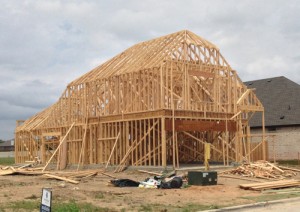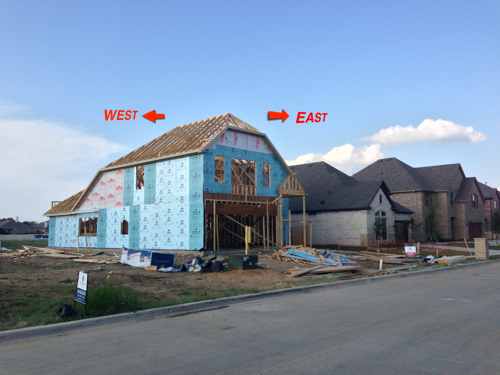
As I’ve mentioned before, we’re building a new home. Although we currently buy wind-generated electricity, I’ve been very interested in solar panels. However, I’m about where I was when I started considering buying an electric vehicle. My knowledge is limited although my desire is great.

Fortunately, through my blog, I have met several people who have solar panels at their homes. They’ve walked me around their house, shown me their arrays, talked about amount of energy generated.

Now I need to get down to the nitty gritty:
The new house’s front faces South and no roof slants in that direction. I know that’s the preferred location, but I have sizable roof surface area facing both East and West. Can that be used? If so, how badly does it affect the financial cost and payback?
All the electricity I generate will probably go to the grid. If it does, does it offset kilowatt hours I use or am I selling it wholesale but buying it retail? If I generate more electricity in a month than I use, does someone send me money?
What are the incentives for adding solar power? I know Texas’ population is growing and we’ve already experienced some minor rolling brownouts in the heat of the Summer. Does the state offer incentives? The federal government? The electric utility companies? Anyone else?
I’ve seen solar dishes that track the sun. I am not yet certain, but I think I could set one of those up near the back of the back yard. How do they compare in cost? Power generation? Do they violate my new deed restrictions?
I’ve also seen instructions for building your own solar panels. I am under the impression that these arrays cannot be connected to the grid, due to home made arrays not having a certification of some sort. In order to do that, I’d have to store the energy in a batter of some type. How does this compare in cost?
I’ve seen companies that install the panels at no cost, but you sign a contract to purchase electricity from them (at a rate lower than any electric utility sells it) for 20 years. If you sell your home before then, you pay for the system as part of the sale, making it a permanent part of the home and the property of the next owner. How do their rates compare to the utilities? What happens if there’s a hail storm or a tornado and the array is damaged or destroyed? Will their rates for electricity be a guaranteed percentage less than the utility companies in 5 years? 10? 15? If I sell my home after 5 years, have I paid for any of the system or am I purchasing it as if it is new? At what price? I spoke to a company that does this, but they won’t meet with you until you have two months of electric bills in the new home so they can intelligently size the system.
We’ll take this journey together as I gather information. Stay tuned!


Comments